Find out what the propagation and garden teams have been up to this week.
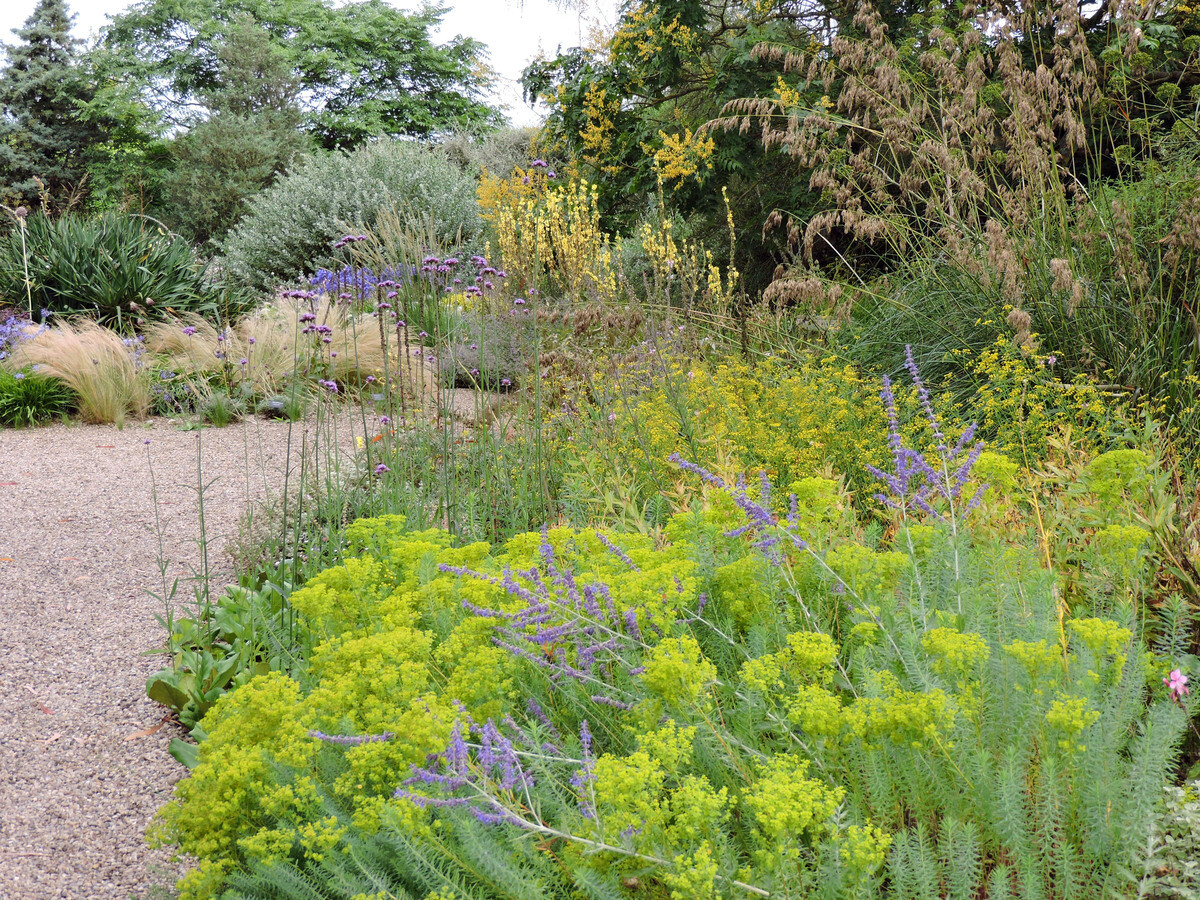
How to grow euphorbia (spurge)

Euphorbias add a distinct yellowy-green to all areas of Beth’s garden, from the shade of the woodland to the dry, sunny Gravel Garden. Some have large, showy flowerheads, like Euphorbia characias subsp. wulfenii whose architectural heads stand tall throughout spring and early summer, and species such as E. cyparissias, which produce low growing foliage helpfully clothing the ground during the growing season. A species that doesn’t fit the typical euphorbia appearance of acid green bracts is Euphorbia griffithii, instead producing orange-red flowers and red-tinted foliage.
With over 1500 different species, native to almost every country in the world, euphorbia is an incredibly diverse genus.
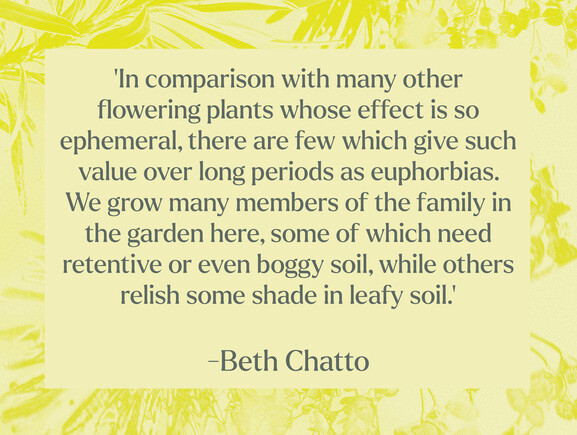
Wildlife credentials with Dr Chris Gibson
Euphorbia contains numerous native plants as well as a larger number of non-natives that we grow in gardens. All species have flowers in a unique structure, a cyathium, which contains specialized nectar glands, the shape of which is important for identification, and which attracts visiting pollinators, especially flies and ladybirds. The irritant milky sap has several functions, to hold on to water and make many of the species very drought-tolerant, and to deter herbivores. But as always something gets around such defences: if you are very lucky your spurges may be eaten by the huge and dramatically coloured larvae of the spurge hawk-moth.
Propagation at Beth Chatto’s
Many of our euphorbias are produced from cuttings taken throughout the growing season. Some, such as Euphorbia characias subsp. wulfenii are grown from seeds collected from only the largest, showiest heads. As seedheads explode when ripe, the propagation team must keep a close eye and remove the heads before the precious seeds are thrown everywhere!
Companion plants for euphorbias preferring full sun/free draining soil:
Companion plants for euphorbias preferring sun/part shade and moisture retentive soil:
Euphorbias in Beth’s Garden:
Euphorbia characias subsp. wulfenii- makes a dramatic feature plant in the dry garden. Long stiff stems clothed in blue-grey foliage form a great clump, handsome all the year round. March, April and into May each stem carries a huge head of lime-green flowers. Likes shelter from wind. Height and spread: 1.2m x 90cm
Euphorbia characias subsp. wulfenii
Euphorbia amygdaloides var. robbiae- handsome tall, rosettes of dark evergreen foliage. Sends up showy heads of yellow-green flowers which remain most of the summer. Excellent in shade where it will run to form useful ground-cover. Height and spread: 60cm x 1m
Euphorbia amygdaloides var. robbiae
Euphorbia palustris 'Walenburg's Glorie'- produces on upper half of erect branched stems, heads of bright yellowy-green flowers, similar to E. palustris, but with warmer yellow tones. Narrow, pale green leaves have a white central vein. Height and spread: 1m x 90cm
Euphorbia palustris 'Walenburg's Glorie'
Euphorbia cyparissias 'Fens Ruby'- remarkable foliage effect like colonies of small conifer seedlings, or bottlebrushes, its many stems clothed in dark blue/grey leaves, the top tufts stained maroon. Has the normal lime-green flower heads. Foliage good all summer. Height and spread: 30cm x indefinite
Euphorbia cyparissias 'Fens Ruby'
Euphorbia griffithii 'Fireglow'- From a running root-stock branching stems carry flat heads of small apricot-red flowers above light green foliage, through summer. Happy in a damp soil. Height and spread 90cm x 60cm
Euphorbia griffithii 'Fireglow'


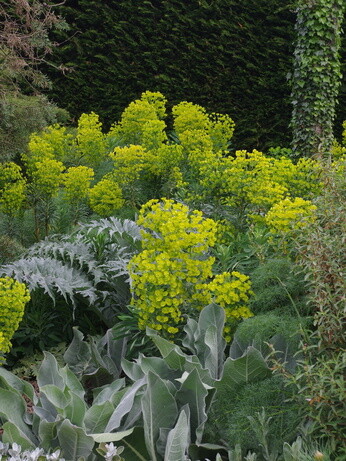
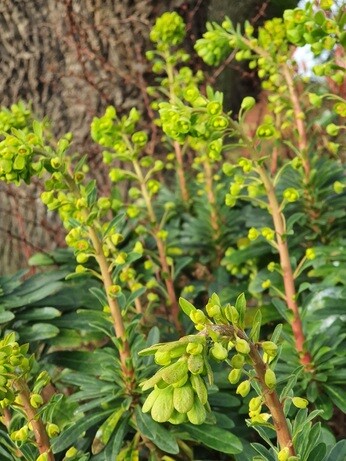
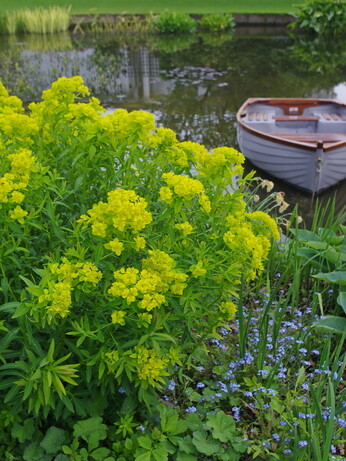
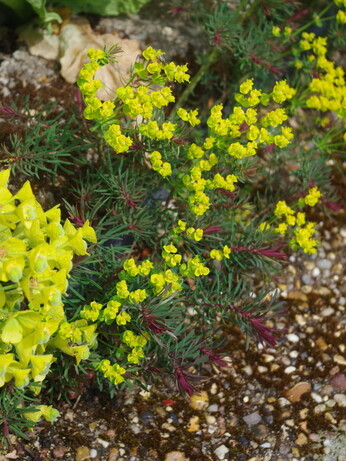

COMMENTS